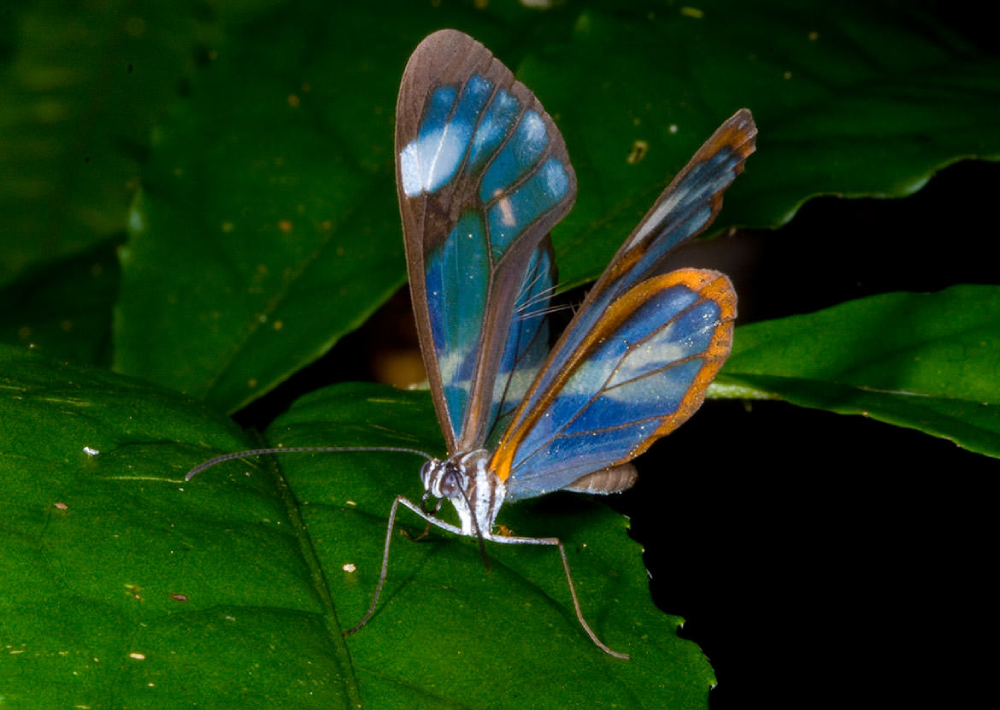In the vast and intricate tapestry of Earth’s biodiversity, few creatures capture the imagination quite like the Glasswing Butterfly (Greta oto). With its delicate, translucent wings that seem almost magical, this enigmatic insect stands as a testament to the beauty and wonder of the natural world. Found primarily in the lush rainforests of Central and South America, the Glasswing Butterfly is a marvel of evolution, blending exquisite aesthetics with remarkable adaptations.
Physical Characteristics
At first glance, the Glasswing Butterfly appears ethereal, its wings seemingly made of delicate glass. Unlike most butterflies, whose wings have vibrant patterns and colors, the Glasswing boasts wings that are almost entirely transparent. This unique feature sets it apart from its peers, giving it an otherworldly appearance that has captivated scientists and enthusiasts alike.
Measuring between 5 and 6 centimeters in wingspan, the Glasswing Butterfly is relatively small compared to other butterfly species. Its body is slender and streamlined, with a characteristic orange hue that contrasts starkly with its transparent wings. While its wings lack the colorful pigments found in many butterfly species, they are adorned with faint black markings that serve both aesthetic and functional purposes.
Adaptations for Survival
The transparency of the Glasswing Butterfly’s wings is not merely a product of chance; it is a finely tuned adaptation honed by millions of years of evolution. These transparent wings serve several crucial purposes in the butterfly’s quest for survival in the dense rainforest environment.
First and foremost, the transparency of its wings provides the Glasswing with exceptional camouflage. When resting on leaves or flowers, the butterfly’s wings blend seamlessly with its surroundings, making it nearly invisible to predators such as birds and lizards. This camouflage allows the Glasswing to evade detection and increases its chances of survival in a habitat teeming with potential threats.
Additionally, the Glasswing Butterfly’s transparent wings serve as a form of protection against predators. Unlike many butterfly species, whose wings are easily damaged by predators’ sharp beaks or claws, the Glasswing’s wings are relatively resistant to wear and tear. The structural composition of its wings, which includes a network of tiny scales and veins, provides strength and durability without sacrificing transparency. This unique combination of strength and transparency makes the Glasswing Butterfly a formidable adversary for would-be predators.

Life Cycle and Behavior
Like all butterflies, the Glasswing undergoes a remarkable transformation known as metamorphosis. Its life cycle begins when a female butterfly lays eggs on the leaves of host plants, typically members of the Solanaceae family such as nightshade and potato plants. After hatching, the larvae, or caterpillars, feed voraciously on the leaves of the host plant, growing and molting several times before entering the pupal stage.
During pupation, the caterpillar undergoes a dramatic transformation inside its chrysalis, emerging weeks later as a fully formed adult butterfly. Once emerged, the Glasswing Butterfly embarks on a quest for nectar, using its long proboscis to sip the sweet liquid from flowers. In doing so, it serves as a vital pollinator, facilitating the reproduction of numerous plant species in the rainforest ecosystem.
The Glasswing Butterfly is primarily diurnal, meaning it is active during the day. It can often flutter among the foliage of rainforest understories, its transparent wings shimmering in the dappled sunlight. Despite its delicate appearance, the Glasswing is a resilient and resourceful creature, capable of thriving in the challenging conditions of its natural habitat.
Conservation Status and Threats
Despite its undeniable beauty and ecological significance, the Glasswing Butterfly faces numerous threats to its continued existence. Habitat loss, primarily due to deforestation and agricultural expansion, poses the most significant threat to this delicate species. As rainforests continue to shrink at an alarming rate, the Glasswing’s habitat diminishes, leaving it increasingly vulnerable to extinction.
Climate change also poses a significant threat to the Glasswing Butterfly and other rainforest species. Rising temperatures and altered precipitation patterns can disrupt the delicate balance of ecosystems, affecting the availability of food and resources for butterfly populations. Additionally, extreme weather events such as hurricanes and droughts can directly impact butterfly populations, further exacerbating their vulnerability.
Invasive species represent another threat to the Glasswing Butterfly, as introduced predators and competitors can disrupt native ecosystems and outcompete native species for resources. Pesticide use, both legal and illegal, also poses a threat to butterfly populations, as exposure to these chemicals can harm individuals and disrupt breeding patterns.
Conservation Efforts
Efforts to conserve the Glasswing Butterfly and its rainforest habitat are underway, led by a combination of government agencies, non-profit organizations, and local communities. These efforts include the establishment of protected areas, such as national parks and reserves, where habitat destruction is prohibited, and biodiversity is preserved.
Raising awareness about the importance of rainforest conservation and the threats facing species like the Glasswing Butterfly is also crucial for their survival. Education and outreach programs aim to engage the public in conservation efforts, fostering a deeper appreciation for the natural world and inspiring action to protect it.
In addition to conservation measures, research into the biology and ecology of the Glasswing Butterfly is ongoing, providing valuable insights into its behavior, habitat requirements, and conservation needs. By understanding the challenges facing this species, scientists can develop targeted strategies to mitigate threats and ensure its long-term survival.
Conclusion
The Glasswing Butterfly stands as a symbol of nature’s resilience and beauty, its transparent wings a testament to the wonders of evolution. In the face of mounting threats, from habitat loss to climate change, preserving this delicate species and the rainforests it calls home is more critical than ever. By working together to conserve their habitats and raise awareness about the importance of biodiversity, we can ensure that future generations will continue to marvel at the elegance of the Glasswing Butterfly and all the wonders of the natural world.









